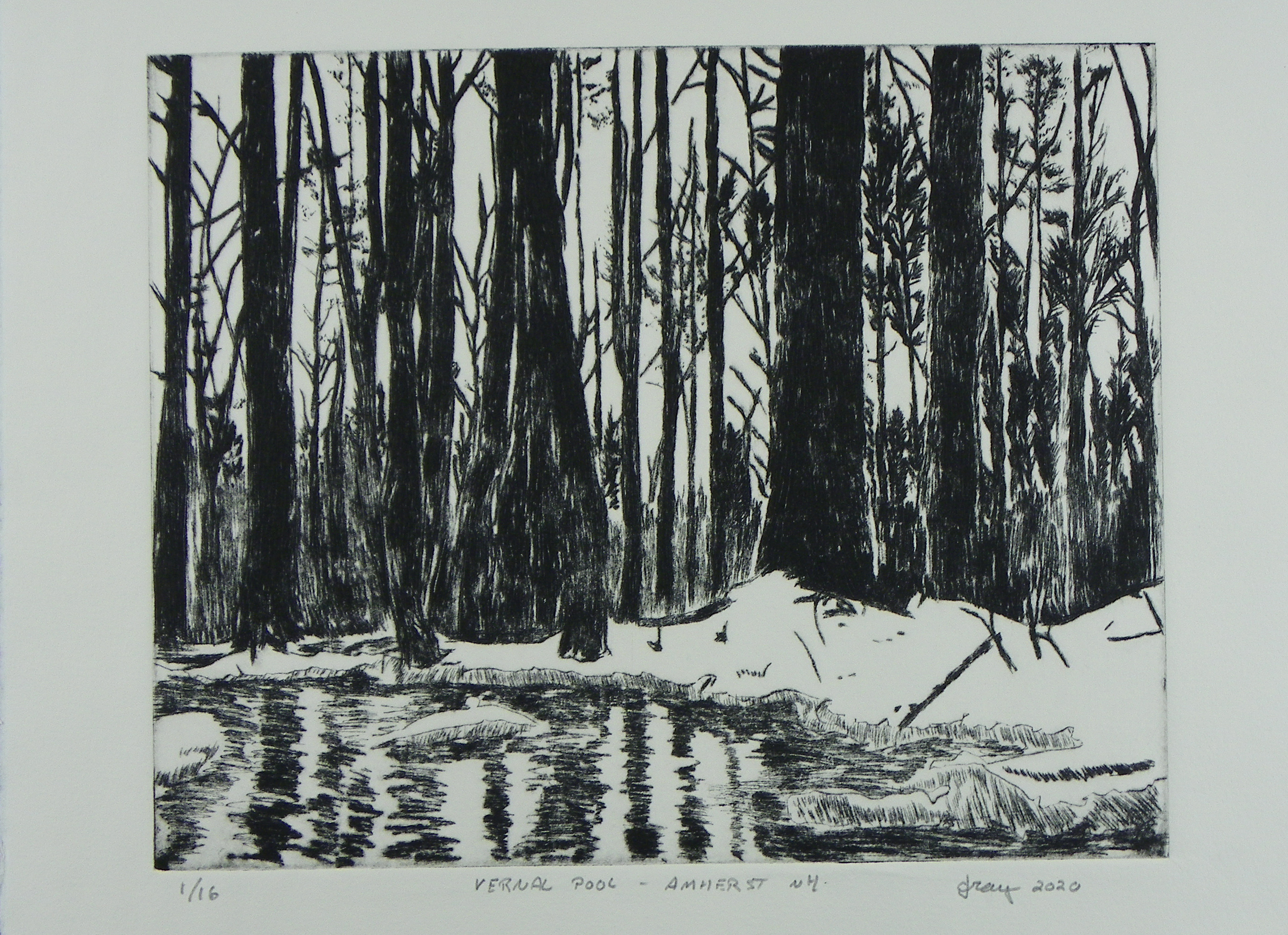ETSY STORE LINK
DajosCorner: Vernal Pool - Amherst NH - $50.00
- print size: 8.0 x 9.75 in (20.3 x 24.89 cm)
- paper size: 9.5 x 13.0 in in (24.14 x 33.0 cm)
- paper: BFK Rives (cream)
- limited series: 16 + 1 Artist Proof (A/P)
 Menu
Menu
$50 - A dry point etching print

This is a dry point etching done on a sheet of plexiglass. Living in NH we do a lot of hiking, in the spring time, as the snow is receding, and the days are getting warmer, these vernal pools fill the low points of the forest floor, however they typically dry up in the summer. This image is based on a picture I took late in the afternoon, with the sun setting through the trees. There was a nice silhouette of the trees and their reflection in the pool.
I find it amazing that these little pools are an important habbitat.
Fish are top predators in wetlands, but they can’t survive in pools that dry out. As a result, vernal pools provide key breeding habitat for amphibians whose tadpoles and larvae are especially vulnerable to fish predation: wood frogs, spotted, blue-spotted, and Jefferson’s salamanders. In the spring, these amphibians migrate from nearby woodlands to vernal pools, where they breed and deposit their eggs. Once hatched, tadpoles and larvae develop quickly into young frogs and salamanders that must leave the wetland before it dries up by early or mid-summer for wood frogs, or by late summer or early autumn for salamanders. Other species besides amphibians use vernal pools as habitat. Fairy shrimp are small crustaceans that require vernal pools for breeding. Spotted and Blanding’s turtles, great blue herons, raccoons and predatory insects travel to vernal pools to feed on amphibian eggs, tadpoles, insects and crustaceans in the pools.